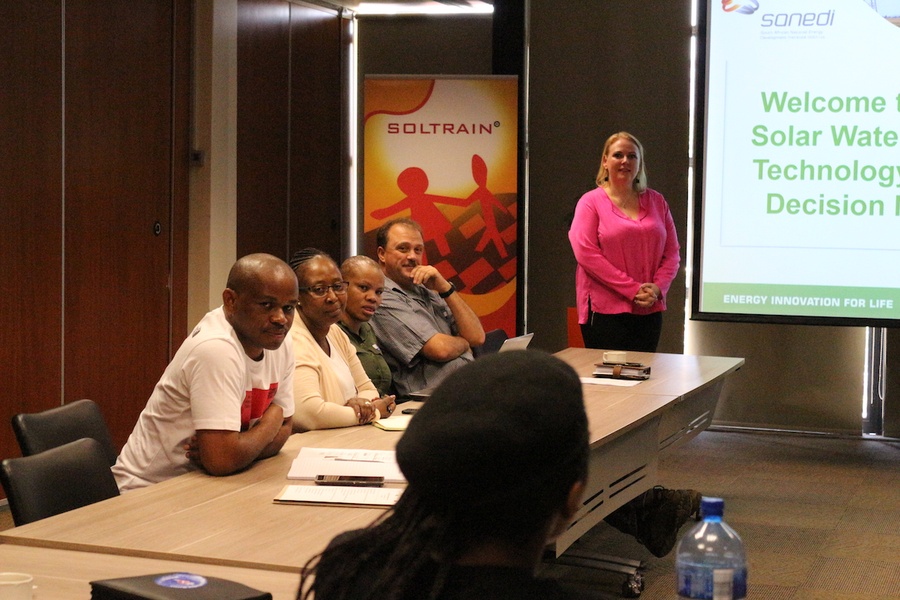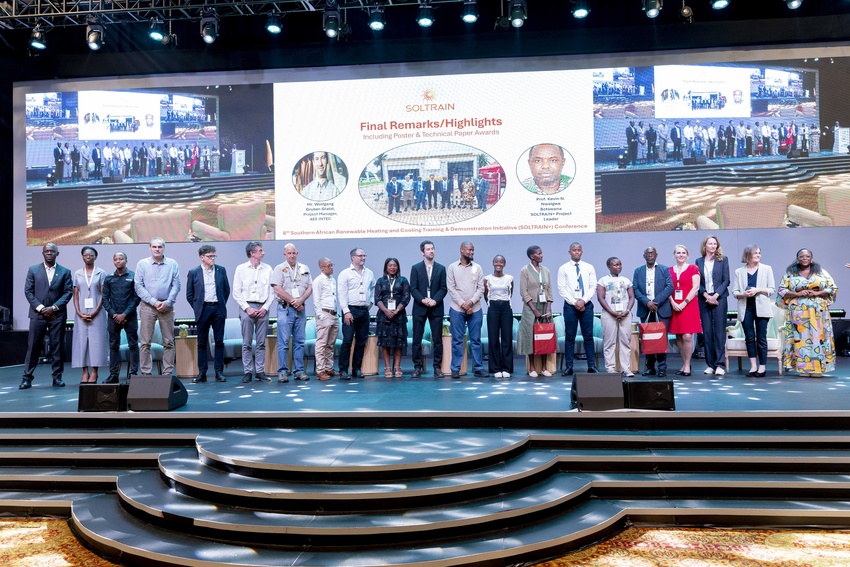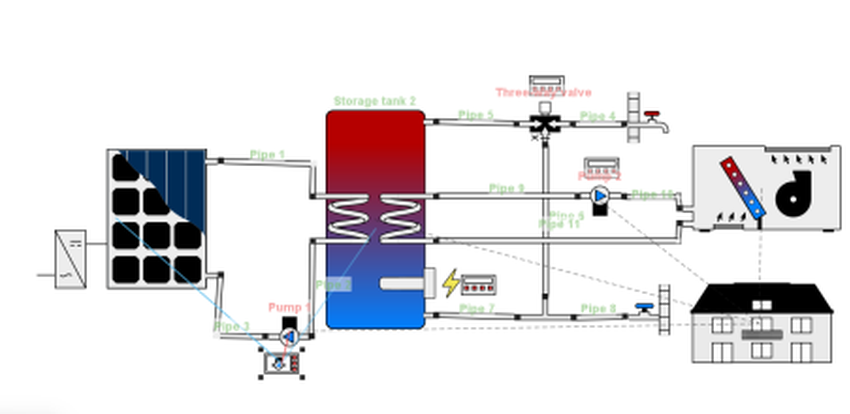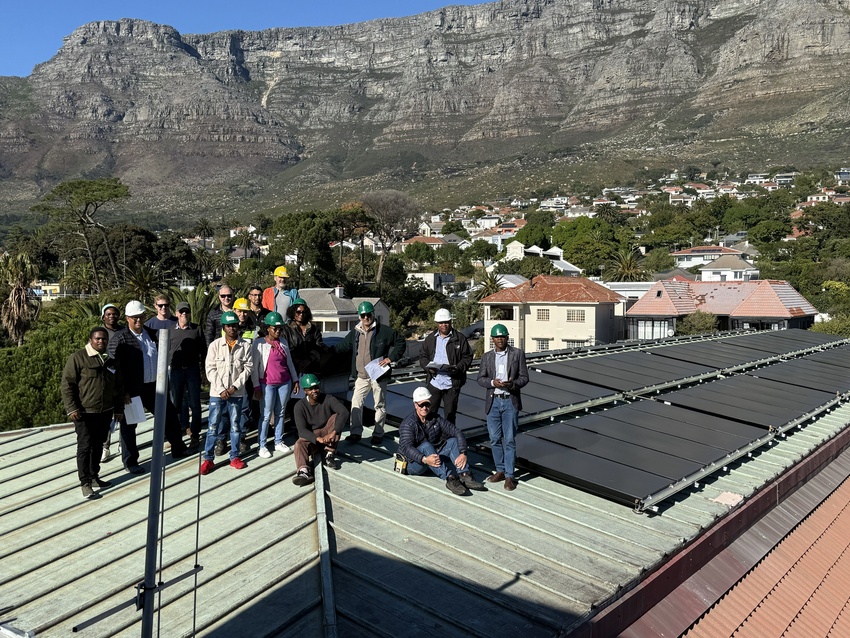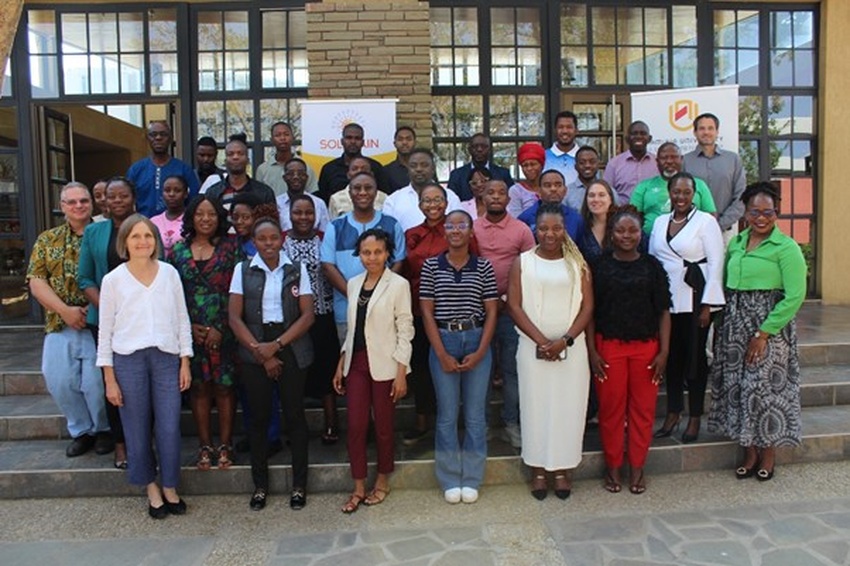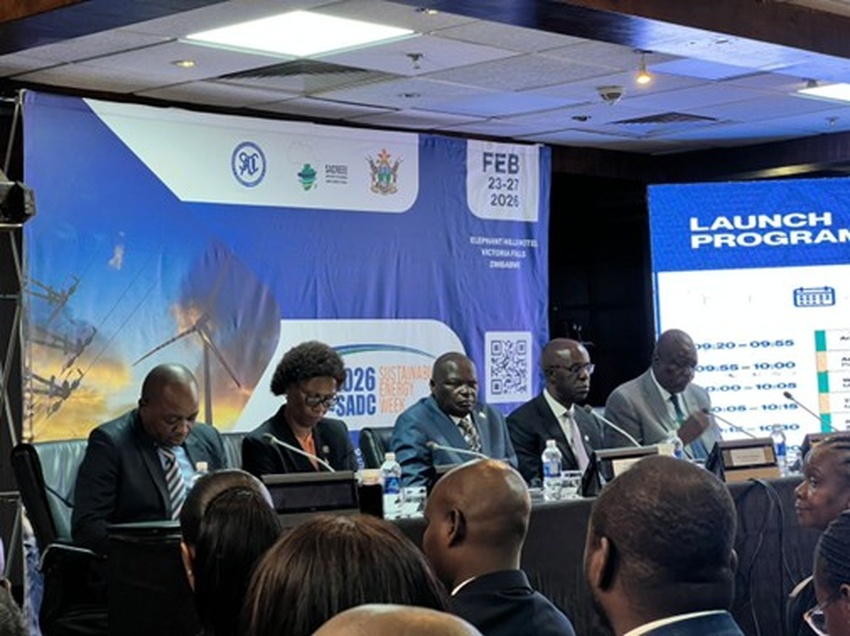Decision making in solar thermal investment for government partners
Submitted by Dr Karen SurridgePublished 7 years ago
SANEDI has been engaging on sustainable, potential renewable energy and energy efficiency solutions for several government departments intensively since October 2017. This has led to the signing of Memoranda of Agreements to collaborate on specifically identified projects for at least the next 5 years.
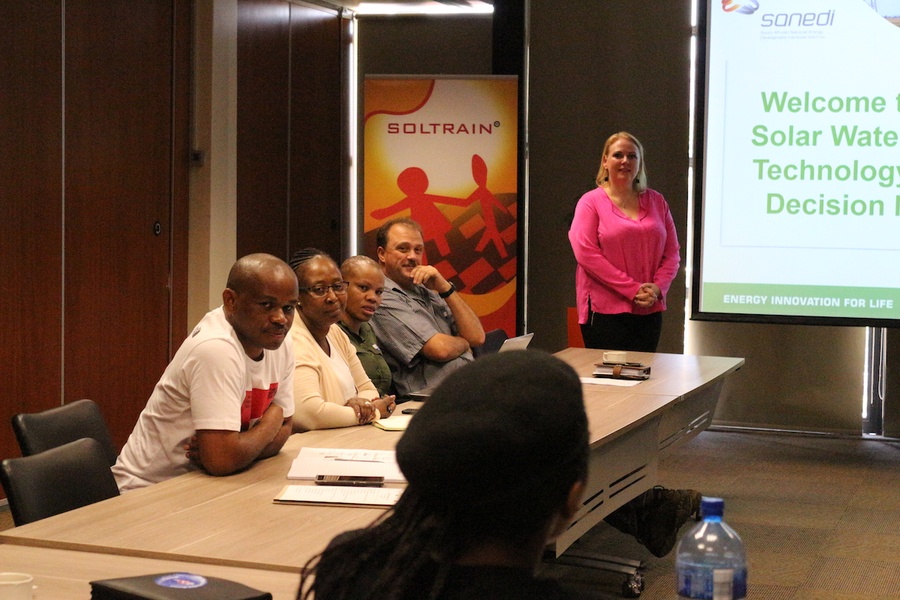
Initial project prioritisation identified Solar Water Heating (SWH) as a target for implementation, and in October, SANEDI, under the banner of SOLTRAIN, hosted a half day of decision maker seminar training and understanding SWH operating at different scales, followed by a half a day site visit to a large scale solar water heating installation at Wits Junction in Johannesburg.
The first part of the morning session explored an overview of SWH technologies at differing scales and what they can deliver. This was presented by Dr Karen Surridge (RECORD Centre Manager, SANEDI) and included an understanding of global solar thermal, SWH first principals, thermodynamics, thermosyphon versus pumped systems, different types of applications for solar thermal technologies (e.g. district heating, cooling, drying), and finally, examples of South African solar thermal installations.
This was followed by a presentation by Ms Karin Kritzinger (Senior Researcher CRSES, Stellenbosch University) that focussed on economic aspects and considerations for SWH in South Africa. Topics covered in order to understand the implications of investing in a SWH system included efficiency curves, user profiles, simulation software as a decision assistance tool, expected capital expenditure on different systems, expected operational expenditure in relation to durability, repair and maintenance, tariffs, return on investment and finally, payback period prediction.
Discussions from the morning session of theory included understanding the relationship between expenditure and energy savings when considering investment in a SWH system. The scale and what can be delivered by a system to different building types and demands was also of paramount importance in how a system could be engineered to deliver optimal performance in answer to the defined need.
